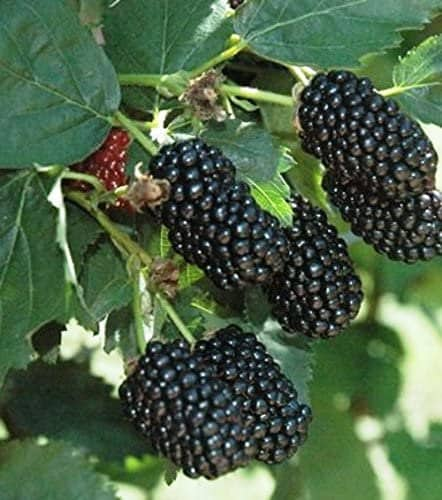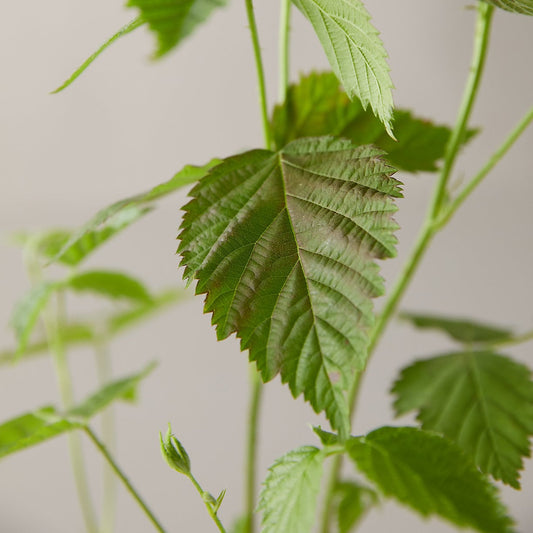The Gardener's Guide to Growing Arapaho Blackberries
Arapaho blackberries are a treasure among fruit gardeners, celebrated for their early ripening, exquisite flavor, and the convenience of their thornless canes. As one of the earliest maturing thornless blackberry varieties, Arapaho offers a head start on blackberry season, providing gardeners with juicy, sweet fruits in early summer. Developed by the University of Arkansas, this variety is also known for its excellent disease resistance and compact growth habit, making it an ideal choice for gardeners with limited space. Whether you're an experienced gardener looking to diversify your berry patch or a newcomer eager to start your fruit-growing journey, this guide will take you through the steps to successfully grow Arapaho blackberries, ensuring a plentiful harvest.
Understanding Arapaho Blackberries
Arapaho blackberries are distinguished by their glossy, firm berries that pack a sweet, slightly tart flavor, making them perfect for fresh eating, jams, and desserts. This variety's thornless canes and upright growth habit not only facilitate easy harvesting but also make it a great choice for gardens where children or pets play. Suitable for USDA zones 5-9, Arapaho blackberries can thrive in a variety of climates, producing bountiful crops year after year.
Selecting the Right Location
1. Sunlight Needs: Arapaho blackberries perform best in full sun, requiring at least six to eight hours of direct sunlight daily to maximize fruit production.
2. Soil Requirements: These blackberries favor well-draining, fertile soil with a slightly acidic pH (5.5-6.5). Enriching the planting site with organic matter can enhance soil quality and support healthy plant growth.
Planting Arapaho Blackberries
1. Optimal Planting Time: Early spring is the ideal time to plant Arapaho blackberries, after the last frost has passed, allowing the plants to establish before the onset of summer.
2. Planting Process: Dig a hole twice as wide and just as deep as the root ball. Space plants about 4-5 feet apart to ensure ample air circulation and room for growth. Mix in compost or aged manure to enrich the soil, then plant the cane, backfilling the hole and watering thoroughly.
Care and Maintenance
1. Watering: Regular watering is essential, especially during the plant's first growing season and in periods of drought. Water deeply and regularly to maintain even soil moisture.
2. Mulching: Apply a 2-3 inch layer of organic mulch around the base of the plants to retain soil moisture, regulate soil temperature, and suppress weed growth.
3. Fertilization: Use a balanced, slow-release fertilizer in early spring to promote healthy growth. A second application after the initial fruit set can encourage continued productivity.
4. Pruning: Prune Arapaho blackberries in late winter or early spring to remove any dead or diseased canes and to thin the plants, which promotes healthy growth and berry production. Because Arapaho is an erect variety, minimal trellising or support may be needed.
Harvesting Arapaho Blackberries
Arapaho blackberries typically ripen in early summer, making them one of the first blackberry varieties to mature. The berries are ready for harvest when they turn deep black and can be easily pulled from the plant. Frequent harvesting encourages continued fruit production throughout the season.
Overcoming Challenges
While Arapaho blackberries are relatively disease-resistant, they can still encounter issues such as pests and environmental stressors. Implementing integrated pest management practices and providing proper care can help ensure a healthy and bountiful harvest.
Conclusion
Growing Arapaho blackberries is a rewarding endeavor that yields delicious, sweet fruits early in the summer. By following these guidelines and providing the right care, you can enjoy the abundant harvests of Arapaho blackberries in your garden, adding both beauty and taste to your outdoor space. Whether you're expanding your home orchard or trying berry cultivation for the first time, Arapaho blackberries offer a fruitful and satisfying experience for gardeners of all levels.







